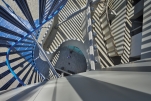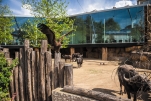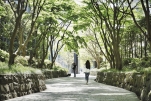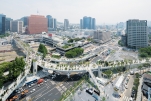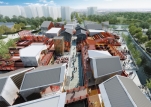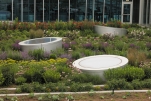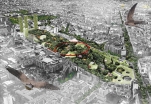
Will the Tails of Comets Drown in a Green River?
’Great railroad lines cut furrows through the landscape/city as if they were comets trailing tails of dust/stars.‘ In 1987 John Hejduk described Milan with this phrase giving us the concise and synthetic explanation of the importance of infrastructure for Milan’s urbanity and the strength of its imprint. Around 1.300.000 sqm of the territory of the municipality of Milan are occupied by 7 rail yards that are or going to be soon disused. How to return these territories to the city? Ways to solve this problem were proposed during the workshop “Scali Milano”.




